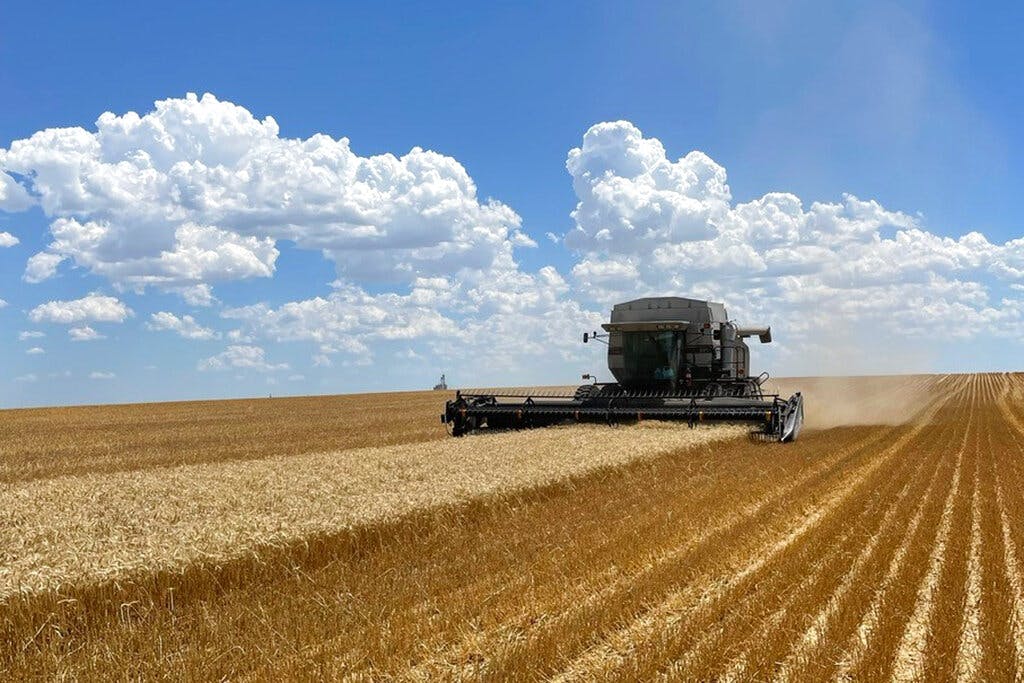Famine Risk as Supplies of Vital Fertilizer Dwindle, Scientists Warn
The national security threat of a dearth of phosphorus may not be as obvious as others, but it’s just as real.

Scientists are warning that we’re running out of phosphate, a key fertilizer for the crops that feed earth’s eight billion people. This raises the danger of famine unless agriculture innovates new ways of prompting exhausted soil to bring forth its bounty.
“We have reached a critical turning point,” a professor of Soil and Water Science at the U.K.’s Lancaster University, Philip Haygarth, tells the Guardian. “We might be able to turn back but we have really got to pull ourselves together and be an awful lot smarter in the way we use phosphorus.”
Fail, Mr. Haygarth warns, and “we face a calamity that we have termed ‘phosphogeddon.’” The warning echoes those of the visionary writer, Isaac Asimov. “Life can multiply until all the phosphorus is gone,” he said, “and then there is an inexorable halt which nothing can prevent.”
“No farmers, no food,” reads a popular bumper sticker in America’s breadbasket, pushing back against the perception that produce and meat spring by spontaneous generation on supermarket shelves. Lost in the messaging is the role of phosphorus, sometimes called “the oil of our time.”
“In a few years,” a senior research scientist at Rothamsted Research, Dr. Martin Blackwell, said back in 2019, “it could be a political issue with some countries effectively controlling the production of food by having control of rock phosphate supplies.”
Low prices have led to using it as if there’s no end in sight, causing problems such as runoff leading to algae blooms and poisoning reservoirs, a subject at the UN’s first water conference in 42 years held last week.
Hennig Brand is credited with identifying phosphorus in 1669, and humanity has spent the ensuing centuries studying how to harness its many properties, with 13 scientists earning Nobel Prizes for their work in the field.
Industrial mining of phosphorus-rich guano, or bird excrement, began in the mid-1800s, and the resource became so precious that in his 1850 State of the Union message, President Fillmore pledged “Nothing will be omitted on my part” to secure America’s supply.
“Peruvian guano has become so desirable an article to the agricultural interest of the United States,” Fillmore said, “that it is the duty of the government to employ all the means properly in its power for the purpose of causing that article to be imported into the country at a reasonable price.”
Today, America “mines and consumes about 23 million tons of phosphate rock per year,” according to the EPA, whittling known domestic reserves down by 99 percent. “At current rates of use,” Dr. Blackwell said, “a lot of countries are set to run out of their domestic supply in the next generation.”
Those countries at risk include America, Communist China, and India. Together, Morocco, Communist China, Algeria, and Syria, sit on over 80 percent of rock phosphate. The national security threat of this may not be as obvious as others, but it’s just as real.
In his new book, “The Devil’s Element: Phosphorus and a World Out of Balance,” a Pulitzer Prize finalist, Daniel Egan, “explores the alarming reality that diminishing access to phosphorus poses a threat to the food system worldwide — which risks rising conflict and even war.”
Two centuries ago, the Guano Wars raged in South America. Spain and Peru fought over deposits in 1864, while Bolivia, Chile, and Peru spilled blood over bird droppings in 1879. So insatiable is humanity’s appetite that even the taboo of grave robbing proved no obstacle.
The director of the Center for Battlefield Archaeology at the University of Glasgow, Tony Pollard, cites reports of bones from the Battle of Waterloo being ground into fertilizer.
“The benefits of implementing measures to improve phosphorus sustainability will be observed mostly at local to national scales,” says a report by the Our Phosphorus Future project. Citing input by over 100 scientists, they warn “any delay will only accrue further impacts and societal costs.”
America may soon face a day when an updated agriculture slogan emerges, one reading, “No phosphate, no farmers, no food,” but with dead soil and Dust Bowl-style famine facing millions, we won’t need a bumper sticker to tell us that phosphogeddon has arrived.

